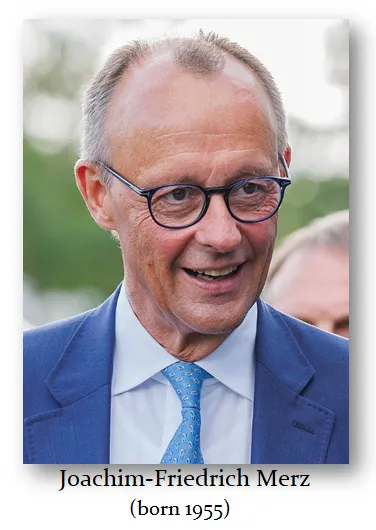by Leo Hohmann, Leo’s Newsletter:

Important guest post below by Martin Armstrong of Armstrong Economics, providing historical context for today’s European thirst for war. (Parenthetical statements in italics were added by myself for purposes of clarity and additional research).
It has begun. German hospitals (and schools) are preparing for war. Germany has embarked on its first permanent foreign deployment of its troops outside of Germany since the days of Hitler and World War II.
TRUTH LIVES on at https://sgtreport.tv/
Joachim-Friedrich Merz, the man set to be Germany’s next chancellor, is a very dangerous warmonger, and Germany’s parliament has approved the dispatch of 5,000 German troops to eastern Lithuania, along NATO’s eastern boundary. This is truly a historic event. I was in Tokyo when the government wanted to send troops to the Middle East, but the US had restricted its constitution to confine Japanese troops within 200 miles of their border. The politicians wanted to change the constitution, and hundreds of thousands of Japanese protested, fearing the military would rise again.
Because of the Cold War, the CIA funded the birth of the EU Community as a unified Europe to be the buffer against Communist Russia. Therefore, the restrictions imposed on Japan were NOT applied to Germany since the CIA was exploiting Germany. After World War II, the Allied powers subjected both Germany and Japan to strict military restrictions. Still, the nature and evolution of these limitations differed significantly due to geopolitical contexts and post-war developments, as the CIA/Neocons were focused on Communist Russia rather than China.
Germany:
- Immediate Post-War (1945–1949):
- Germany was fully disarmed and demilitarized under Allied occupation (Potsdam Agreement, 1945). Its military (Wehrmacht) was disbanded, and war industries were dismantled.
- The country was divided into four occupation zones (U.S., British, French, and Soviet), with no independent military allowed.
- Cold War Re-militarization (1950s):
- The rise of the Cold War led to the creation of two German states:
- West Germany (FRG): Joined NATO in 1955 and established the Bundeswehr (defense forces) under NATO integration.
- East Germany (GDR): Formed the National People’s Army under Soviet/Warsaw Pact oversight.
- Restrictions remained on nuclear, biological, and chemical weapons, but troop deployment was permitted within alliance frameworks (NATO/Warsaw Pact).
- The rise of the Cold War led to the creation of two German states:
- Post-Reunification (1990–Present):
- The 1990 Treaty on the Final Settlement with Germany (Two-Plus-Four Treaty) capped reunified Germany’s military at 370,000 troops and banned nuclear/chemical weapons.
- Today, Germany’s military operates under NATO and EU missions, with parliamentary approval required for deployments (e.g., Afghanistan, Mali).
Japan:
- Immediate Post-War (1945–1952):
- Japan was completely disarmed under U.S. occupation (1945–1952). The 1947 Article 9 Constitution renounced war and prohibited maintaining military forces.
- Cold War Adjustments (1950s–Present):
- The 1954 Self-Defense Forces (SDF) were created for limited self-defense, but Article 9 interpretations barred offensive capabilities (e.g., aircraft carriers, long-range missiles).
- Japan relies on the U.S. security umbrella and avoids “collective self-defense” (e.g., aiding allies under attack) until reinterpretations in 2014.
- Modern Limitations:
- Deployments overseas (e.g., Iraq 2003, peacekeeping missions) require special legislation and remain politically contentious.
- Japan’s military spending and capabilities have grown, but constitutional constraints persist, unlike Germany’s NATO-integrated forces.
Key Differences:
- Germany regained sovereign military capacity earlier (1950s) under NATO, while Japan retained constitutional limits on offensive capabilities.



